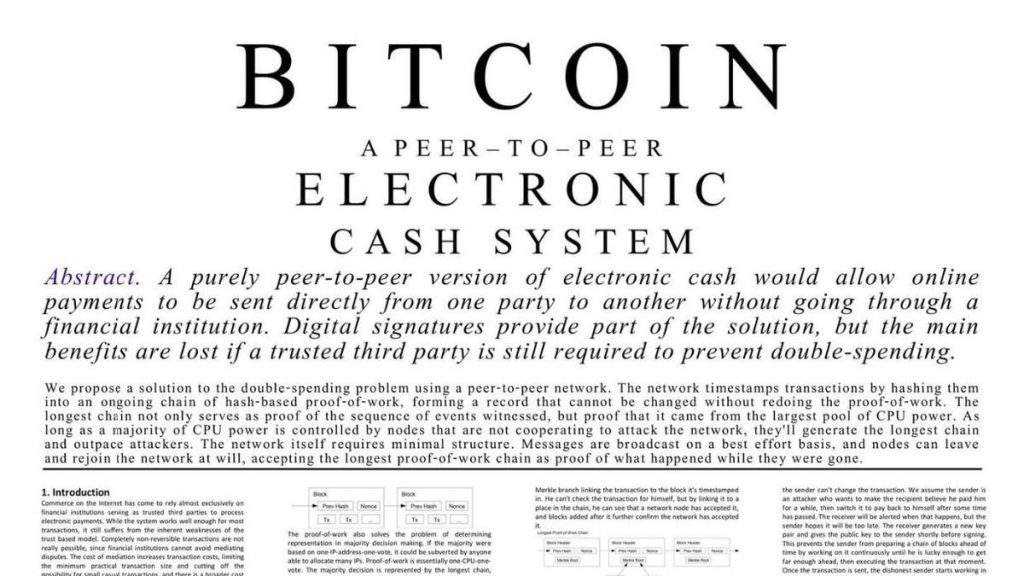What is Bitcoin Whitepaper Day?

The first page of the original Bitcoin whitepaper from 2008. Seventeen years ago, on 31 October 2008, the pseudonymous Satoshi Nakamoto published “Bitcoin: A Peer-to-Peer Electronic Cash System.”
The release, just weeks after the collapse of Lehman Brothers, landed in the middle of the global financial crisis, and that timing was likely no accident. What began as a modest nine-page document became the starting point of a financial shift. Satoshi’s whitepaper laid the foundation for Bitcoin’s rise in the years that followed. Today, bitcoiners around the world celebrate Bitcoin Whitepaper Day to remember the start of this movement and the birth of the first decentralised cryptocurrency system.
Bitcoin as a response to the traditional money system
Bitcoin was designed to address core weaknesses in traditional money and finance. The whitepaper outlined solutions to several fundamental problems:
- Decentralisation and no trusted third parties. In conventional systems, we must trust central banks and financial intermediaries to act responsibly. History shows that trust is often broken. Bitcoin removes this dependency by introducing a peer-to-peer network with no central middlemen. Transactions can be settled directly between users without a trusted third party.
- Solving the double-spend problem. Before Bitcoin, digital currencies struggled because the same digital money could be spent twice. The whitepaper presented the first decentralised way to prevent double spending. By linking transactions in a blockchain and using proof-of-work, every payment is recorded in an immutable, time-ordered ledger. This ensures that the same unit of bitcoin cannot be spent twice.
- Fixed supply and protection against inflation. Bitcoin has a hard cap of 21 million coins. This limited supply protects against monetary inflation. No central actor can create new units at will. Unlike fiat currencies, whose purchasing power can erode through money printing, Bitcoin’s scarcity builds confidence that value will not be destroyed.
- Financial inclusion and global access. An estimated 1.4 billion people still lack a bank account. Anyone with internet access can use Bitcoin, regardless of status or location. Without the barriers of traditional banking, Bitcoin offers an open financial system.
More than digital money
The whitepaper and the invention of Bitcoin started a movement that puts financial self-determination at the centre. Suddenly it became possible to transfer value online without relying on banks or authorities. Bitcoin has since stood for financial sovereignty: individuals can hold full control over their assets and transactions. For many supporters this principle is close to an ideology. Bitcoin represents freedom in finance and challenges conventional ideas about money and ownership.
A toast to Satoshi Nakamoto and 17 years of innovation
Bitcoin Whitepaper Day celebrates the birth certificate of sound, censorship-resistant money. Satoshi’s nine pages showed that 21 million, proof-of-work, and self-custody can be worth more than any institutional promise.
Final Thougths
- Satoshi’s whitepaper is Bitcoin’s birth certificate.
- It was published in the middle of the 2008 financial crisis.
- Bitcoin Whitepaper Day takes place every year on Halloween 🎃

